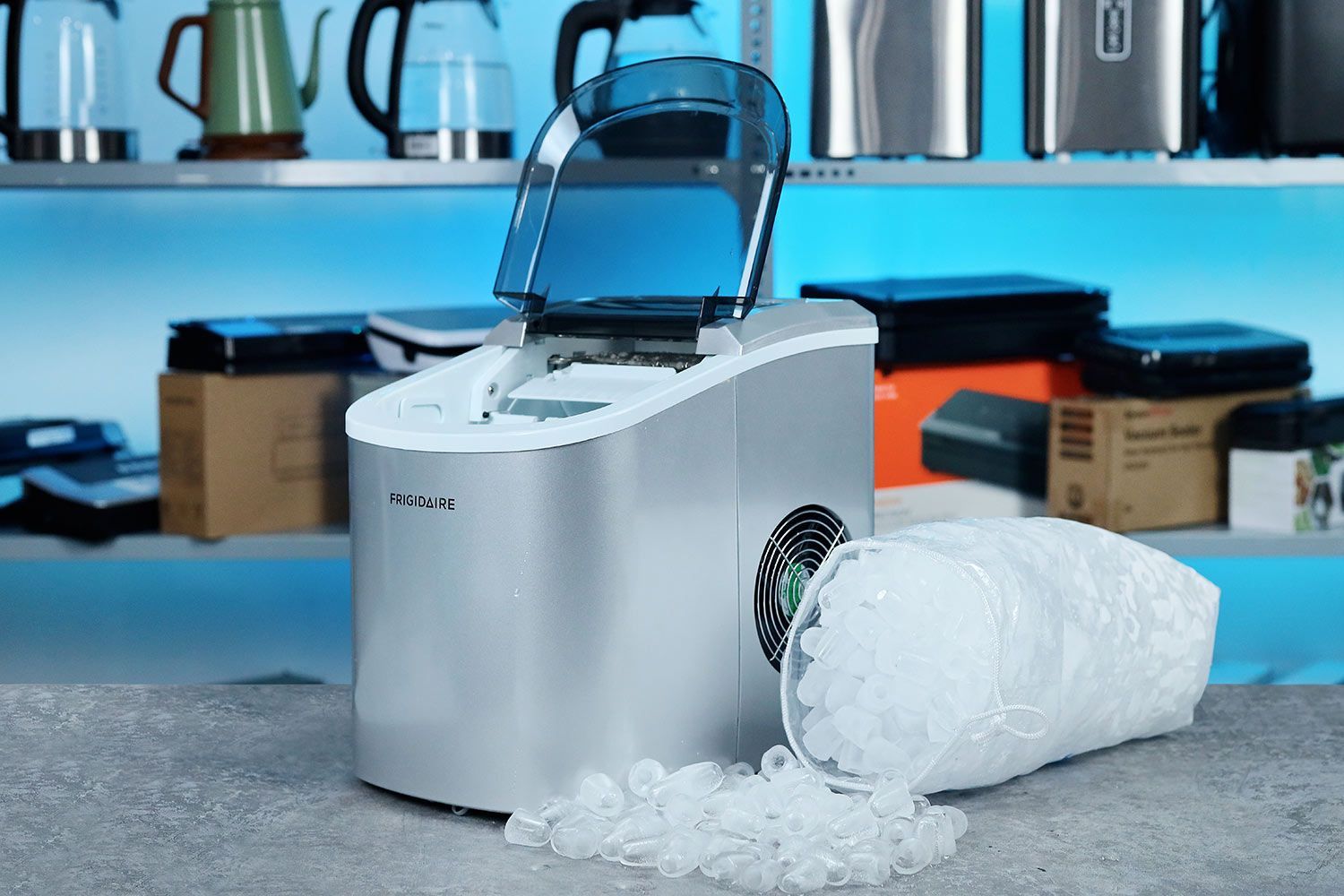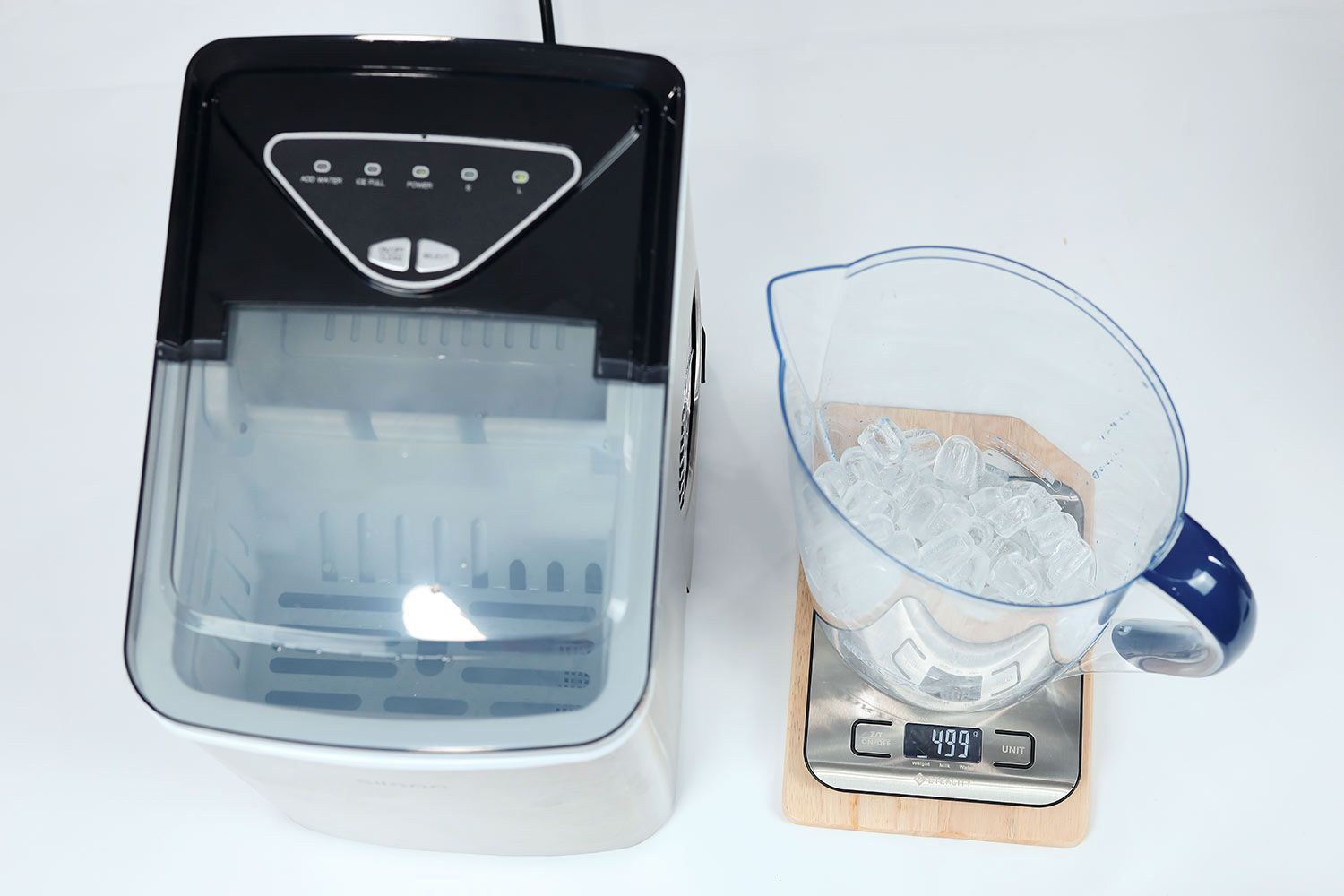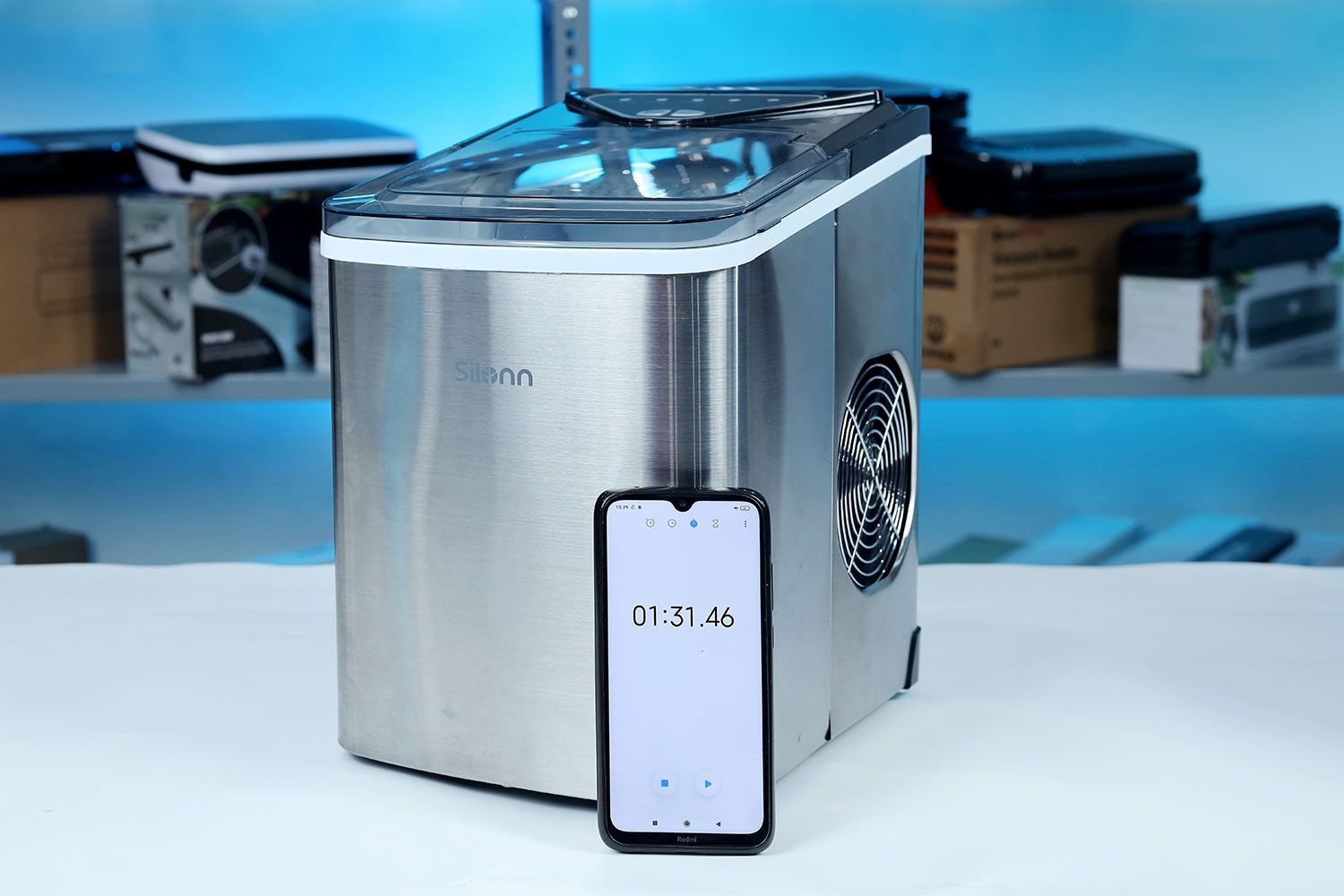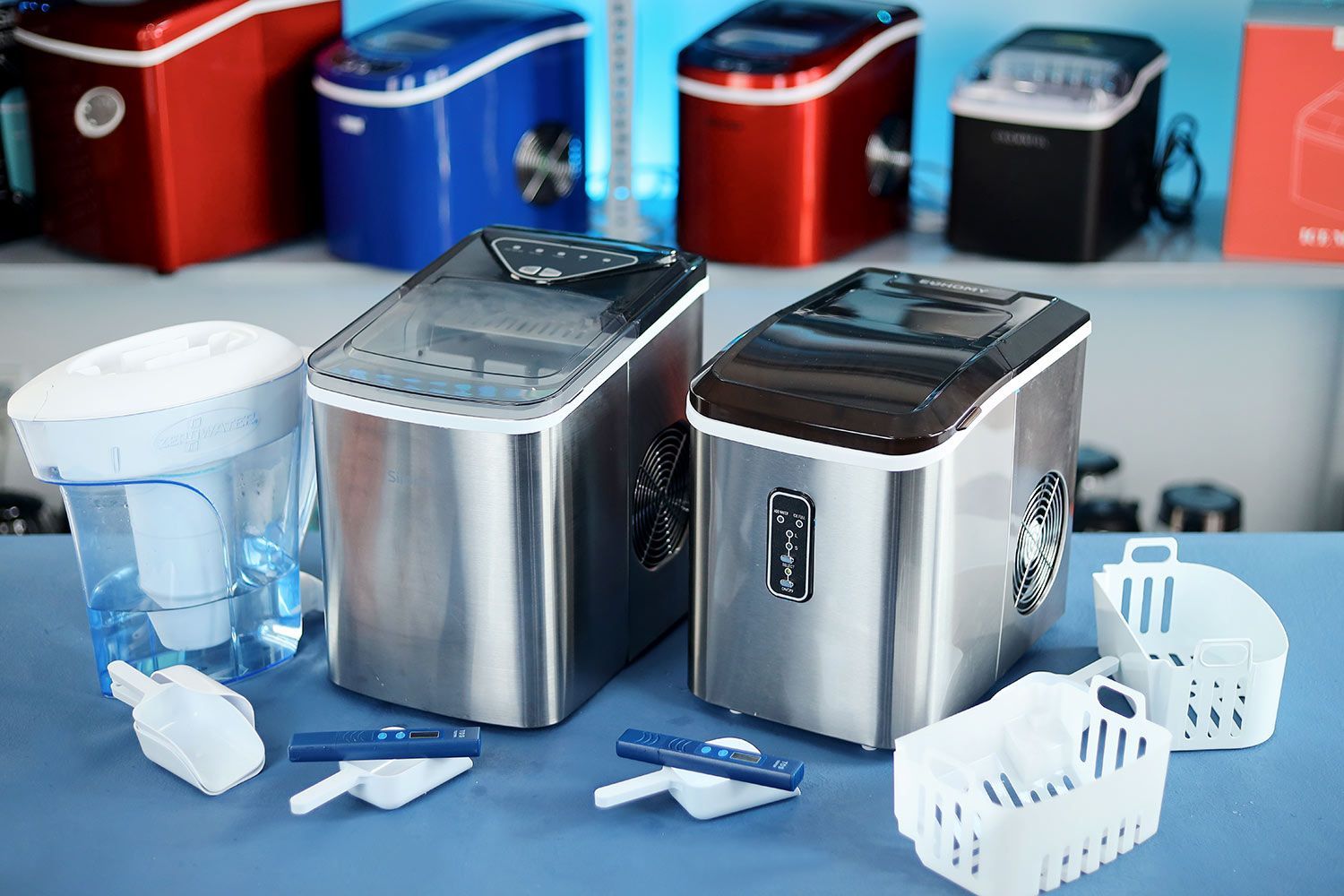Our recommendations are made independently. We may receive commissions from purchases made via our links.
Ice Capacity for Bullet Ice Makers
Most manufacturers will claim their portable bullet ice makers can make 26 lbs of ice per day. In practical terms, this does not tell you how much ice you can get when you actually need it. Our tests do, so read more to find out if a portable ice maker is for you.
This test is part of How We Test and Grade Portable Bullet Ice Makers v1.0
If you’re thinking about buying a portable countertop ice bullet maker, there are a couple of obvious questions that come up. The first is, ‘How much ice can a portable ice maker realistically make’? The second is, ‘How good is the ice quality of a portable ice machine’? We run tests to answer both these questions so you can know whether a portable ice bullet maker is the answer to your ice needs.
How Much Ice Can a Portable Ice Maker Produce?

The short answer to this is 26 lbs (12 kg) per day according to what most manufacturers say. That sounds like a lot of ice, so what’s the catch? Practically, it says very little about how much ice you can get when you might actually need it and not many people are going to sit around making ice for 24 hours anyway.
Furthermore, to reach ideal ice making capacity, there are a few basic parameters such as room temperature, water temperature, and water quality to take care of. Even still, our tests suggest that not many machines live up to this 26 lbs claim.
Essentially, what you really need to know about your ice maker is:
- The working pattern of your machine.
- How much ice you can realistically expect per basket.
- How long a basket of ice making takes.
From this, you can calculate more or less how much ice you can get over any period of time. This is what our tests are designed to do.
So, how much ice do you actually get?

In our tests so far, we have found that the time to produce a basket of ice and the weight of the basket varies to quite an extent. This of course also differs between machines as well as individual batches.
On average though, the time to fill a basket with ice can vary between 90 min to 115 min. So, if you have other things to do, set your ice maker up and come back in one and a half hours to check on things.
Depending on the capacity of the ice basket and how good the machine is at scooping out the ice, quantities tend to vary between 400 g to as much as 600 g per batch. A good average is around 450 g per batch, but one of our best performing machines consistently produced over 500 g per basket.
Our Ice Capacity Testing Procedure
All our tests, for both ice quality as well as ice quantity, are conducted in an air conditioned room of 25 ℃ (77 ℉) using ZeroWater TDS filtered water.
Even so, regardless of what machine you have, it takes at least one basket of ice before your ice maker ‘gets into the groove’. You can speed up this process by putting chilled water of no more than 10 ℃ (50 ℉) into the tank to begin with.
For our tests, however, we run the machines overnight. What this means is that the basket will fill to capacity and then ice making will pause until enough ice melts for the bullets to drop below the infrared sensor line.
This enables us to do two things. One is to ready each machine for ‘prime testing’ and the other was to actually assess the design quality of the lid.
We found that some machines showed more degradation in ice quality than others. This, we attributed mainly to good insulation design or the lack thereof. Portable bullet ice makers don’t have a freezing compartment, but most claim to be able to maintain ice for about an 8 hour period.
How We Score Each Ice Quantity Test

For each test, we gather data from three full baskets of ice. Each ice maker is prepped overnight. The testing starts by emptying out the ice basket and setting the timer.
- Empty the overnight ice basket
- Refill the reservoir with 10 ℃ filtered water
- Set the timer
- ICE FULL indicator turns on
- Stop the timer
- Remove the ice
- Continue ice making
We do not interfere with the ice in the basket, but rather let it accumulate to its maximum capacity according to the design of the machine. Some ice machines scoop the ice out into the basket better than others and we allow this parameter to take its natural course.
Once the ice is removed from the basket and ice making is allowed to continue, we get down to weighing and assessing the ice quality. First, we weigh all the ice produced. Then, we empty the ice into a chilled baking tray and remove any broken or badly formed ice. We weigh this ‘waste ice’ separately. This enables us to factor in an additional ice quality check for this test procedure.
At the end of three full baskets of ice being produced, we calculate the following:
- Average time for filling a basket
- Average weight per basket
From this, we calculate the hour capacity per weight and then extrapolate this to a 24 hour period.
- [Average weight (g) / Time (min)] X 60 (min) x 24 (hrs) = Gross capacity
From this, we establish an initial score on a scale of 1 to 10 based on the benchmark of 26 lbs (12 kg) ice per day since this is the standard average capacity claimed by most manufacturers. In our scoring system, 12 kg or more scores 10 points while 200g = 0.1 pts.
- [10‒(12000‒net capacity) / 200*0.1]
Since good ice making is also about the overall consistent quality, we calculate the average waste ice as a percentage of the initial total weight. For each 1% of waste ice we subtract a total of 0.1 points to calculate the final score.
- Gross score - (% waste ice x 0.1) = Final Score
This ice capacity test counts for 60% of the Performance Score while the ice quality test accounts for 40% of the same score. The ice quality test is designed to see how fast a machine can get up to speed in producing quality ice bullets and its ability to maintain a consistently good quality of ice.
